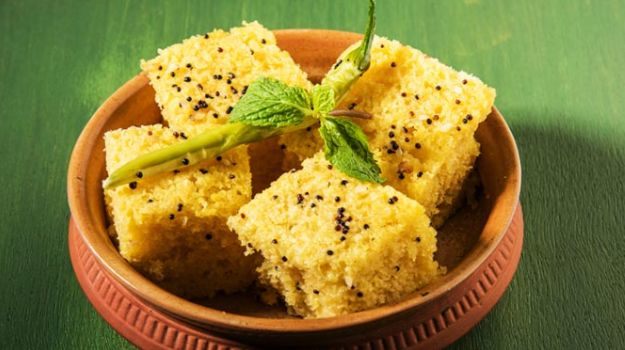Gujarati
sustenance began from Gujarat, the western coastline province of India,
frequently alluded to as "Gem of Western India". In spite of the fact
that the long coastline guarantees colossal assortment of fish, the impact of
Jain culture and theory makes the district an overwhelmingly veggie lover
excepting a few networks who join non-vegan things, for example, goat, chicken,
eggs and fish in their platter. Gujarati cooking styles are changed and lip
smacking as well as high in nutritious esteem. unique culinary styles and mix
of flavors are combined in planning varied dishes stamping uniqueness of each.
Usually a Gujarati thali contain rotli, kadhi or dal, rice, and shaak/sabzi. A portion of the dishes are blend Fred, while
others are bubbled. Gujarati sustenance is all the more frequently served on a
silver platter. Gujaratis utilize a blend of various flavors and flavors to
cook their dinners and this is the thing that makes their sustenance genuinely
outlandish. Individuals in Gujarat eat either sort of curry alongside rice and
roti in relatively every feast. Gujarati dishes as a rule have an exceptionally
diffident taste that makes it genuinely particular from other Indian cooking
styles. The majority of the Gujarati dishes are sweet, while others have a very
bigger convergence of sugar when contrasted with salt and flavors. Some of the
time, jaggery is utilized as an other option to sugar.
1. Bhaat (Rice)
Rice frames a vital piece of a Gujarati thali, anyway its shape may shift. It can be plain rice; a Khatta-mittha bhat that is a rice planning overflowed with flavors and potato having a sweet and harsh taste complimented with lemon peel; a biranj that is rice prepared with sugar, dried foods grown from the ground; a pulao where rice is set up with vegetables, and khichdi. One of the rice flavored dish is “rice pudding”also called doodhpak made by bubbling rice with sugar and drain and set with saffron, cardamom, almonds, cashews and raisins as a rule shapes some portion of sweet in a thali
Rice frames a vital piece of a Gujarati thali, anyway its shape may shift. It can be plain rice; a Khatta-mittha bhat that is a rice planning overflowed with flavors and potato having a sweet and harsh taste complimented with lemon peel; a biranj that is rice prepared with sugar, dried foods grown from the ground; a pulao where rice is set up with vegetables, and khichdi. One of the rice flavored dish is “rice pudding”also called doodhpak made by bubbling rice with sugar and drain and set with saffron, cardamom, almonds, cashews and raisins as a rule shapes some portion of sweet in a thali
2. Rotlo (Breads)
There are different kinds of Gujarati breads made in home. These breads are made in various styles and they comprise diverse flours either separately or in blend. A portion of these like puran poli or vedmi, entire wheat bread loaded down with sweet chickpea dal; thepla, bread made of a blend of flours, flavors and destroyed vegetables; and puri, southern style bread made of entire wheat flour have earned much prevalence even outside the Gujarati people group.
There are different kinds of Gujarati breads made in home. These breads are made in various styles and they comprise diverse flours either separately or in blend. A portion of these like puran poli or vedmi, entire wheat bread loaded down with sweet chickpea dal; thepla, bread made of a blend of flours, flavors and destroyed vegetables; and puri, southern style bread made of entire wheat flour have earned much prevalence even outside the Gujarati people group.
3. Farsan (Side Dishes)
The side dishes of a
Gujarati feast presented with a thali are called FARSAN and are in different
forms, tastes and flavors. These can also be consumed separately as snack
items. Some of the popular farsans are chaat, a mouth-watering dish prepared
with a mix of potato and crispy fried bread flavoured with chutney that is
sauce like items, spices, yogurt and coriander; dahi vada that is fried
dumplings dipped in yogurt and seasoned with cayenne pepper, cumin and salt;
dhokla, a rice flour steamed cake; and kachori, a deep fried ball of dough
stuffed with yellow moong dal, ginger, cayenne pepper and black pepper.
4. Khaman (Dhokla)
A flavorsome and hale and hearty bite produced using
naturally ground lentils and chickpea flour, it is basically the same as its
modest cuisine, the world-popular? Dhokla?. To set up the khaman, the khaman
flour blend is bubbled combined with turmeric, salt and baking soda to make it
light and feathery. It is then cut up into squares shapes and for the most part
embellished with mustard seeds, coriander leaves, sev and cleaved onions.
Traditionally it is served on an extensive green leaf called the Kesuda, the
advanced, urban rendition is served in daily papers in farsan (nibble) shops
with tart chutneys and a few bits of green chillies. Mainstream adjustments of
the khaman incorporate Ameri khaman (squashed up khaman decorated with sev and
pomegranate), Nylon khaman (gentler and quick cooking khaman) and Masala
(khaman presented with hot and fiery cold powder)




Comments
Post a Comment